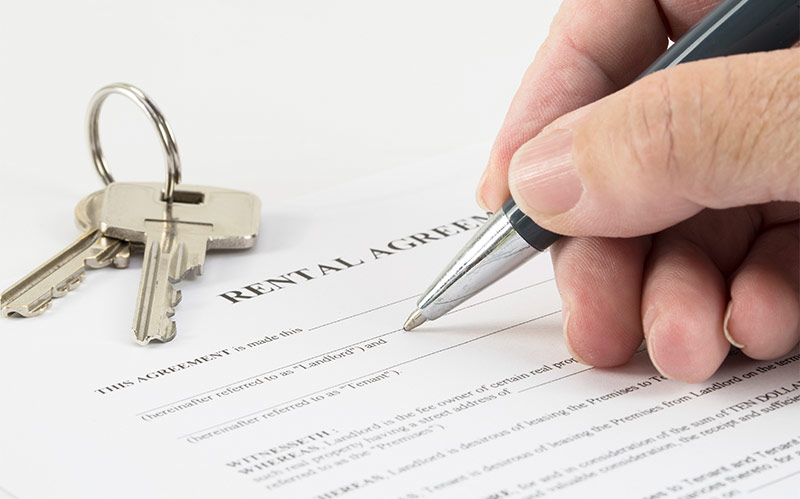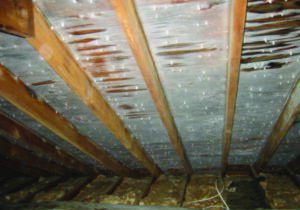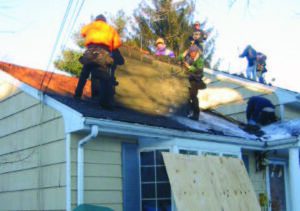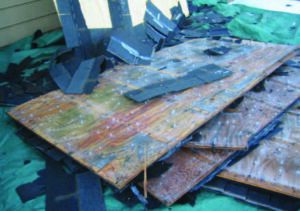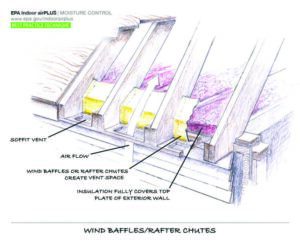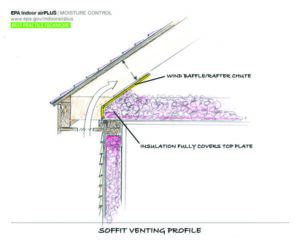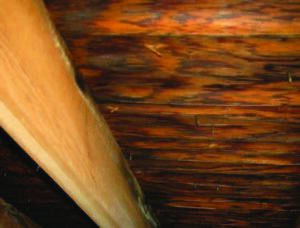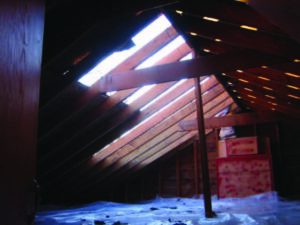
MYTH No. 1
‘Toxic’ Mold is the only dangerous type of mold.
“Toxic” mold or “black” mold is often touted by the hucksters in the mold industry as being the one that makes people sick, the one you must eliminate. This is a pure scare tactic.
Yes, there are some strains of mold that seem to be more toxic than others. But there is no such thing as good mold, or even tolerable mold, unless you like stinky cheese. Mold in your home is a problem because it signifies a moisture problem. Moisture inside your home enables mold growth, and it can also lead to rot, threatening the structure itself.
On top of that, any mold problem that’s allowed to continue often will pave the way for the dreaded “black mold.” The most infamous “black mold,” stachybotrys chartarum, is what’s known as a tertiary mold. It’s very slow to develop and usually follows earlier mold growths, actually feeding off the previous mold colony.
Stachybotrys is also the most difficult to detect in air samples because its spores are heavy and reluctant to become airborne. And the cheap Petri dish, or settling plate, test kits you can buy in the big-box stores, which often brag about detecting “black mold,” actually won’t grow stachybotrys at all, because the culture medium is wrong.
There are more than 100,000 species of mold (experts are still debating how many), and many have been found to be hazardous to human health. While it may be true that some molds are intrinsically more hazardous than others, it’s our belief that there is no such thing as benign indoor mold growth. That is, any unnatural concentration of indoor mold—no matter the type—is a problem and should be confronted.
Bottom line: Indoor mold is bad for your house and bad for you and your family.
MYTH No. 2
It has not been proven that mold is a health risk.
The negative health impact of mold exposure is well documented. If any health practitioner scoffs at the idea that mold exposure can make people sick, this is not a professional you want to place your trust in. He hasn’t done his homework.
“Health effects (of mold exposure) generally fall into four categories. These four categories are allergy, infection, irritation (mucous membrane and sensory), and toxicity,” says Dr. Harriet Ammann of the Washington State Department of Health’s Ecology Department.
Dr. Ammann’s highly detailed and footnoted paper will glaze most readers’ eyes, but an excellent example of mold toxicity may reside in an affliction most of us are familiar with: the peanut allergy. Some experts argue that people who are allergic to peanuts are not actually allergic to peanuts, but rather to a toxic substance produced by a mold that grows on peanuts called aflatoxin b.
Whether or not aflatoxin b. causes life-threatening allergic reactions, it is nonetheless considered one of the most potent carcinogens known to science—serving as a direct cause of cancer—and is produced by a fairly common mold. A number of institutions have documented the negative health effects of mold, including the Mayo Clinic, the US EPA, Berkeley Labs, Brown University, and the University of Tulsa.
Bottom line: If you are exposed to indoor mold, get rid of it, or get out.
MYTH No. 3
If you can’t see it or smell it mold is not a problem.
Mold can grow very well in complete isolation, inside wall cavities, between floors and ceilings, in attics. Not only can you not see hidden mold, but if it’s cut off from the flow of air that you’re breathing, you’re unlikely to even smell it.
But mold has a nasty habit of producing chemicals that can penetrate walls and get into your lungs anyway. These chemicals are of two types: microbial volatile organic compounds (MVOCs), and mycotoxins (poisons produced by fungi). These chemicals can make some people very sick, and they rarely know what hit them.
And then there’s the unavoidable fact that indoor mold growth is a symptom of excess moisture, and excess moisture will eventually wreck your home.
Bottom line: If someone is chronically ill in your house, and especially if they feel better when they’re away than when they’re home, a professional mold inspection is needed.
MYTH No. 4
Bleach kills mold.
Liquid bleach is a solution of chlorine in water, usually 6 percent sodium hypochlorite, thus 94 percent water. Smearing bleach on mold may appear to kill it, but the effect is superficial and very temporary. Once the chlorine is gone – and it evaporates rapidly – what’s left is all that water, feeding the mold.
There are many chemicals that kill mold. They’re called biocides. That means they kill life. (Bio = life + cide = kill.) Also: Anything that will kill mold is also a potential health threat to you and your pets. Even if you close up a house and gas it or fog it with one biocide or another, what you’re left with is a house full of dead mold, which can be every bit as dangerous to health as it was alive.
Moldy materials in a home must be carefully removed by properly trained professionals – after the moisture problem is identified and solved – and replaced with new, clean, dry material, or the problem will persist.
Mold removal, known as remediation, is done much like asbestos removal. Workers in “moon suits” and respirators isolate the work area with plastic sheeting. They set up HEPA-filtered fans blowing outdoors to create negative air pressure in the work zone, and begin removing moldy drywall, carpet, carpet padding, and whatever else cannot be cleaned. All that material is then bagged, and the bags and wiped down and carried outside to avoid contaminating the rest of the house.
Bottom line: A little mildew on your shower tile can be cleaned up with bleach. Anything else likely requires professional help.
FACT No. 1
Mold is everywhere and mold problems exist indoors in every climate.
Mold is, literally, everywhere on the planet, in every climate. A house in the Mojave Desert can have a mold problem as easily as one in Florida or New Orleans.
Mold needs three things to thrive: moisture, food, and the right temperature. Moisture can collect in walls, attics and crawl spaces in the driest of climates with a little help, such as a roof or siding leak, plumbing flaw, and pressure differentials created by air conditioning, or even a poorly vented bathroom.
Food for mold is pretty much everything we build with and everything we own. Mold loves household dust… even in the kitchen sink. And the warmth mold needs is the same temperature range humans prefer.
Bottom line: Every home has mold but not every home has a mold problem. If you think you might have a mold problem, don’t ignore it. Get help.
FACT No. 2
Mold affects everyone differently.
Some people can live in a house teeming with mold growth and never be bothered by it. Others need only open a musty book to begin a fit of sneezing, watering eyes, headache, dizziness, you name it.
One person in a mold-infested home may develop serious, debilitating respiratory problems, while another person in the same home may just have an occasional headache, or a little brain fog, or nothing at all.
Frequently, the person most affected by indoor mold exposure has an immune system already compromised by other factors: they’re infants, or elderly, they’re on immune-suppressant drugs, they’ve been treated often with antibiotics, they’re on chemotherapy for cancer, and so on.
But not always. Some people are the proverbial canary in the coal mine. They are sensitive to mold and its byproducts.
Bottom line: If someone in your home is chronically ill, always consider the possibility that something in the environment, such as mold, is the trigger.
FACT No. 3
A clean house (and/or new house) doesn’t prevent mold from growing.
Despite what you might think, new homes are more likely to have serious mold problems than old homes. Surprised? Modern construction materials, such as drywall, absorb more moisture than older products such as plaster. The way buildings are built today, they also dry more slowly when water gets into places where it shouldn’t be. In addition, many of the things we now use to build houses contain nutrients ideal for mold growth.
Making matters worse, most houses have very little fresh air exchange, so when mold and the other byproducts of dampness begin to proliferate, it becomes concentrated, causing potentially serious health problems including asthma attacks, sinus problems, allergies, fatigue and numerous other ailments.
Mold is not about dirt or sloppy housekeeping. Mold is about excess moisture, somewhere. Too much humidity in the air – anything over 50% relative humidity – can encourage mold to develop in dark corners, behind furniture, in closets, walls and other places.
Structural flaws that allow even tiny amounts of moisture to develop inside of a house – insulation errors, unseen plumbing leaks, any number of water-related situations – can give mold the foothold it needs. No amount of cleaning will eliminate it.
Bottom line: If you think you may have a mold problem, don’t be embarrassed, and don’t deny it out of pride. You owe it to yourself and your family to nip it in the bud.
FACT No. 4
Home inspectors don’t know mold.
Unfortunately, many home inspectors (the people who check out a house prior to sale) are ignorant to the presence of harmful mold. Some will see mold, but ignore it because there’s no rot or obvious moisture. Others may not see it at all.
An experienced and responsible home inspector, however, will recognize mold on sight and immediately alert the homeowner or prospective buyer. The best inspectors may go even further by providing a referral to a reputable mold assessment company.
A not-so-experienced and responsible inspector might tell you to “clean” it up, treat it with bleach, buy a fogger, etc. Don’t do that.
Bottom line: Don’t expect a general home inspector to know how to deal with mold—even if he can find it and even if he’s recently painted “Mold” on the side of his truck. Seek an expert.

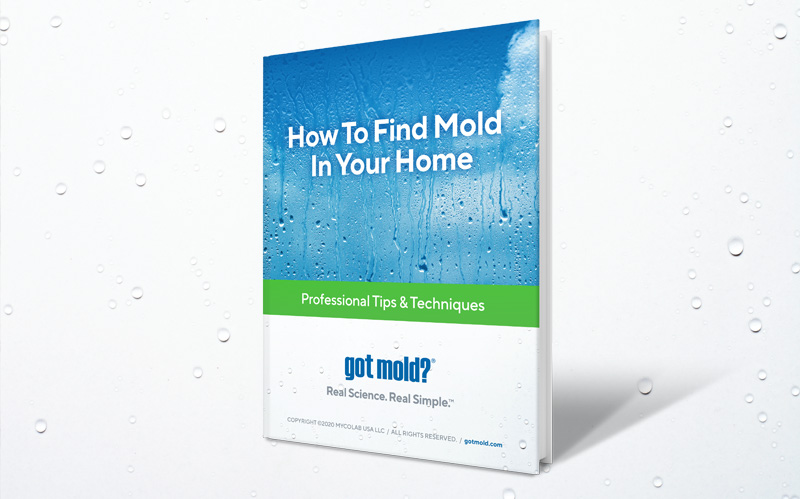


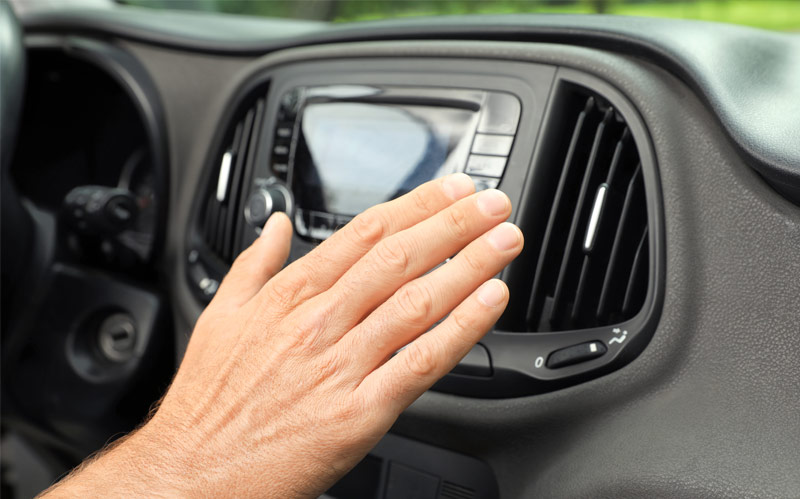

 Lyme is a tough disease. It’s tough to diagnose properly since it mimics other diseases. It’s tough to treat since the offending bacteria have developed some pretty effective defenses and know how to hide. The symptoms can be brutal, oftentimes creating a whole host of other sensitivities to things as basic as light and fragrances. And because it’s a biotoxin-based illness, it works against you in the case of mold exposure, where the two amplify one another.
Lyme is a tough disease. It’s tough to diagnose properly since it mimics other diseases. It’s tough to treat since the offending bacteria have developed some pretty effective defenses and know how to hide. The symptoms can be brutal, oftentimes creating a whole host of other sensitivities to things as basic as light and fragrances. And because it’s a biotoxin-based illness, it works against you in the case of mold exposure, where the two amplify one another.
